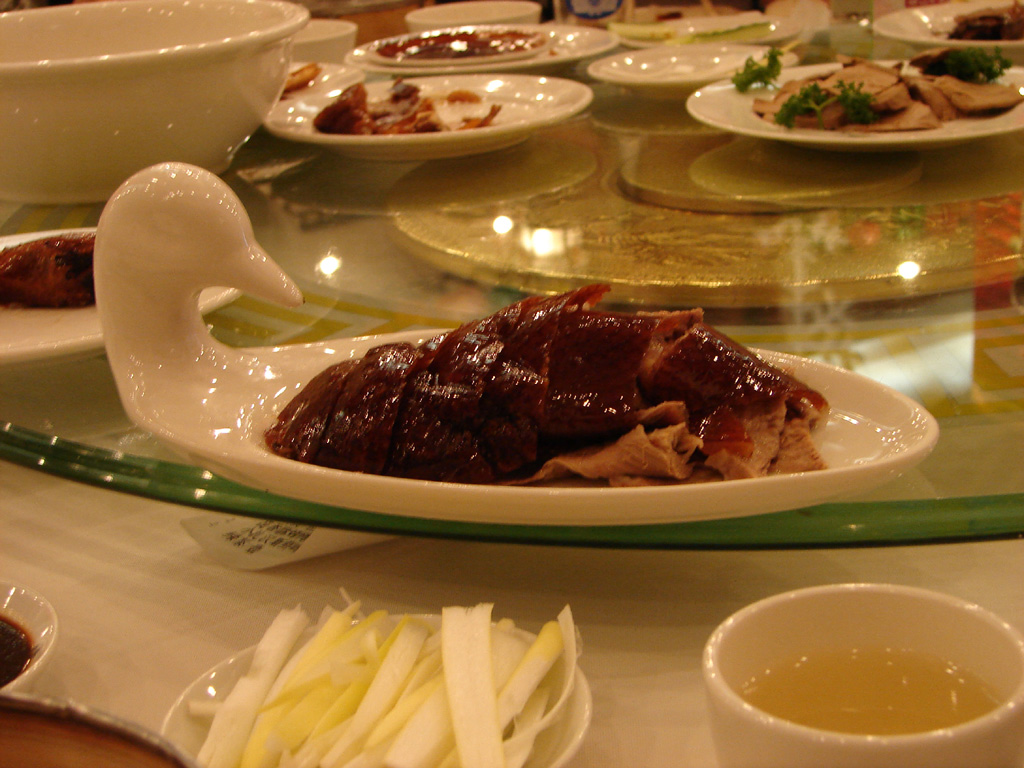

License: Creative Commons
Asia is a vast continent with a massive variety of different cultures, flavors, and influences that it is impossible to pick out a typical, generic dish. There is no basic, universal dish that is emblematic for the whole continent, and that is one of the many reasons why people love Asian cuisine. It is a blend of almost every imaginable ingredient, from rice and vegetables to dozens of types of meats. You will also find garlic, onions, tofu, soy, sesame seeds and fruit, all cooked either by steaming, deep frying or stir frying.
Let’s take a look at some of the most popular Asian delicacies and their origins. What makes them so special and how did they become so popular?
There are two things to do in Beijing, an old saying goes, visit the Great Wall and eat a Beijing Roast Duck. Some say that only after you have a taste of a Beijing Roast Duck for dinner do you truly get to enjoy Chinese cuisine and what it has to offer. As a matter of fact, many top food critics and chefs consider Beijing Duck as “the most delicious food in the world”.
Slow roasted and succulent, this famous Asian dish has a long history, first being mentioned in 1206, during the Yuan dynasty, when it was listed among the Imperial dishes. This document, which was later named “The Complete Recipes for Dishes and Beverages”, includes multiple other well-known Chinese delicacies. During the early 15th century, the Beijing roast duck remained one of the main dishes on Imperial menus, only being available to the public in 1522, when the first roast duck restaurant was opened. The restaurant further improved the recipe, employing the now-famous hook from which the duck hangs over a slow burning fire. The duck had to be pre-roasted with radiant heat coming from the walls of the oven, which, in turn, had to be heated with sorghum stalks fire. According to the recipe, this is the only way to achieve that crispy exterior and juicy, succulent interior, while keeping the unique flavor.
Multiple other cookbooks and recipes were created during the Qianlong period (1736 to 1796), making the Beijing roast duck extremely popular, especially among the nobles. Later, during the 1920s, multiple restaurants around the world started to cook this spectacular dish, making the Beijing roast duck an important item on every menu.
According to legend, the dumplings were first created more than 1,800 years ago, in 225 AD, during the Three Kingdoms period. They were first used to stop the effect of a poisonous substance during a march against a local tribe, called the Nanmans. There two other theories behind the dumplings’ origins: they were first created during the Northern Dynasties, resembling a “crescent moon-shaped ravioli” or by the Southern Tang dynasties as a “dry meat Jiaozi”.
No matter their exact origins, we can safely say that the dumplings have been around for thousands of years and have evolved tremendously over the centuries. The success of dumplings as a dish was confirmed when archeologists unearthed ancient dumplings around the Astana Tombs (in modern-day Kazakhstan) in 1972. This shows that dumplings were passed on to Western tribes as early as 1,300 years ago.
During the Qing dynasty, many dumplings restaurants sprung up, quickly making this dish a staple for the average Chinese citizen. Famous chefs have created multiple cookbooks describing hundreds of dumpling varieties, the most popular ones being the Laobian dumplings, the Jiaozi dumpling, the Wonton Dumpling, and the Xiaolongbao soup dumpling.
Spring rolls, as their name implies, are light dishes served mainly during spring. They are popular in many areas of Asia and are considered a staple food in some Chinese provinces. The spring rolls were first mentioned during the Tang dynasty, when they were regarded as ceremonial dishes, often being sent to friends or relatives to mark the beginning of spring. As such, they were decorated with carrots, cucumbers, celery, spinach, chives, eggs and bean vermicelli, all wrapped up in a white pancake.
During the later Ming and Qing dynasties, the cooking methods evolved, and cooks were able to change the size and appearance of spring rolls. They became much smaller and more diverse, very similar to present-day spring rolls. The new spring rolls were exceptionally popular among nobles. Grand banquets, often featuring hundreds of types of spring rolls, were held every year, sometimes including other exotic ingredients, like seafood, mangoes, and various rare spices.
For just about any popular dish, you can find hundreds of years of history spent perfecting the recipe and the flavor. When you spend that much time striving for perfection, it is no surprise if you get as close as mortal man can get! If this article has made you hungry for Asian food, go out and find a local restaurant like Bento and order whatever strikes you fancy.
There is no doubt that having a good communication with a client is instrumental for…
A t-shirt is one of those apparels that people like wearing. Usually, it is light…
Buying a home is a dream for many, and getting a good home loan interest…
The web is the largest repository of data related to different industries. Businesses can make…
What is Content? To answer this, first one has to understand what is content. Content…
Pay-Per-Click (PPC) is the most popular way of digital marketing that allows a business to…